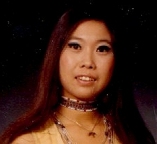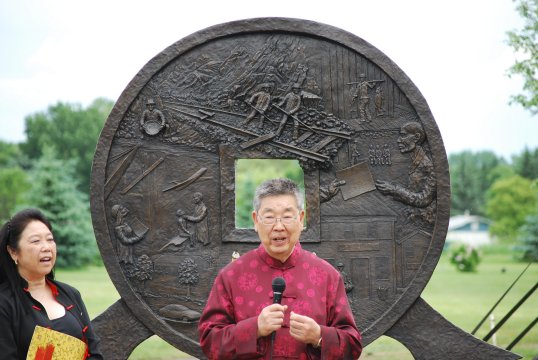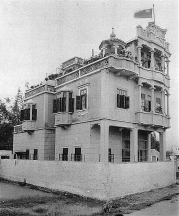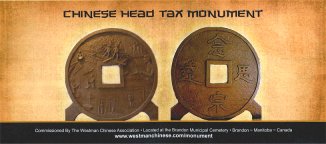The Choy Family Story
www.hillmanweb.com/soos/choystory.html
by Kenny
Choy and Sue-On Choy Hillman
as told to John Jung
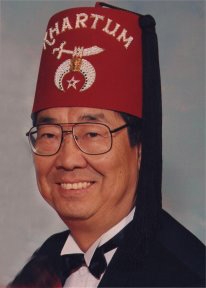
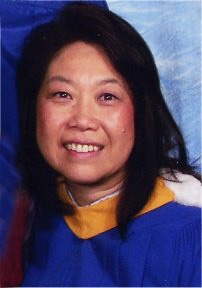
Imprisoned in China, mother and family reunites nine
years later in Canada
Ref: Chinese
Canadian National Council ~ John
Jung
"They had these meetings and they used to
dunk you in a cattle trough and push you from corner to corner to get you
to betray your family or friends, try to get more money out of you."
— daughter Sue-On Choy Hillman.
"Grandpa came here to Winnipeg, did not speak English,
and people made fun of his long pigtail. They gave him a rough time." —
grandson Kenny Choy.
2011: BRANDON, Manitoba — 62 years ago, the fate of
her people on the brink of losing a civil war, Yook Hai Choi knew bad times
would likely befall her family.
Generations of the Choy family were nationalists in China
and had been part of the merchant class. On Oct. 1, 1949 in Beijing, Communist
leader Mao Tse-tung declared China a Communist state in his first address
to the Chinese nation. The advent of Communism in China would crush the
hopes and dreams of millions of Chinese including the Choy family.
The bourgeoisie or merchant class became the prime target
of the new regime. Their new rulers would make examples of the Choys as
they did with many others who were part of that entrepreneur class.
The 42-year-old mother of four would be imprisoned in
1951 after being caught attempting to leave the country at the Hong Kong
border. She had already successfully smuggled her two youngest children,
Kenny and Sue-On, to Hong Kong.
“She was so desperate to leave China,” recounts her son
Kenny, 13 at the time. “So she paid somebody to take her from the old village
to the border between Hong Kong and China. She tried to cross the riverbank
to Hong Kong and she was caught in the bush.”
Her Communist captors jailed her for months. “We had no
idea where she was,” says Kenny. “They always kept members of the family
there because they keep wanting to get more money out of you.”
Although she would be released to her home village of
Dae Gong, Yook Hai Choi and her mother would be persecuted until she was
allowed to leave in 1954 to Hong Kong, her movements were constantly watched
by her Communist monitors for years.
“My mother was eventually allowed to go to Hong Kong but
she went through a lot of persecution as well,” explains her youngest daughter
Sue-On, recounting stories told to her. “They had these meetings and they
used to dunk you in a cattle trough and push you from corner to corner
to get you to betray your family or friends, try to get more money out
of you.”
Sue-On would finally see her mother again when she was
in pre-school. It would take another four years for Yook Hai and her two
children to reunite with her husband, Soo Choy, who was in Canada. By 1958,
it was 11 years after the Chinese Exclusion Act had been repealed in Canada,
which the family had hoped would be the year they would be all reunited
in Canada. “My parents had hopes we would all make it out of China by 1949,
but hopes and expectations are different. It didn’t happen,” says Sue-On.
It was in the small town of Newdale, Manitoba (pop. 265)
where Soo Choy was running a restaurant and hotel that the family would
finally reunite. Sue-On had not seen her father for nine years. For Kenny
it was 11 years and for his wife, it was 10 years since she had last seen
him in China.
Prior to 1947, like other Chinese families, the family
was separated for 24 years because Canada’s 1923 Chinese Exclusion Act
banned most Chinese from coming to Canada. However, their father would
make trips back to China, as allowed under the legislation, in the years
1925, 1928, 1931, 1936, and 1948. He married Yook Hai and would have five
children, one who would die quite young.
An older sister, Sue Sem, would marry in China and only
reunite in Canada years later. Their oldest brother Gene had been in the
United States for many years.
The odyssey of the Choy family began before the 1900s
when their great-grandfather Choy Yet Seed was the first to come to North
America, landing in the state of Washington.
His son Choy Him followed him in 1911 later to Canada
as a merchant and did not pay the $500 Chinese Head Tax. “Grandpa came
as a merchant, working for someone in Vancouver, learned a little English,
then he ended up in Winnipeg to be a houseboy for the Commissioner of Water
Works,” says Sue-On. Prior to that, Choy Him ran a restaurant in Ferrigan,
Saskatchewan.
“Grandpa came here to Winnipeg, did not speak English,
and people made fun of his long pigtail. They gave him a rough time,” says
Kenny. Back in China, though, the country was still ruled by the Ching
Dynasty and the queue or pigtail was a requirement for Chinese to return
to their home village.
“It’s all part of your heritage. You have to have it.
It’s part of your culture,” notes Sue-On. “White people didn’t understand
it was part of the culture just like the aboriginal people wearing braids.
Cutting it off was cutting off part of their life in the old days.”
“You have to have it,” explains Kenny. “The longer the
queue, the more respected they were. My grandfather was a teacher by profession
in China. So, he was well-respected in the home village.”
Choy Him would move to Newdale in the 1930s — a small
town on Highway 16 west of Brandon in south-western Manitoba. He bought
the Fairview Hotel and restaurant.
When their grandfather bought the hotel, it came with
a beer parlour. But a provincial alcohol law only allowed Canadians to
run a beer parlour. Like other Chinese in Canada in the 1930s, Choy Him
could not be a citizen, and had to sell the building. All Chinese in Canada
were considered to have “alien” status under the 1923 Chinese Immigration
Act.
“He had to leave that and sold it, and then bought another
building and called it the Paris Café,” says Sue-On.
In 1923, Choy Him had sent for his son, Choy Soo, and
he would pay his $500 Head Tax to come to Canada. With his father’s help,
he was able to go back and forth to China bringing remittances home, despite
the imposition of Canada’s infamous 1923 Chinese Immigration or Exclusion
Act.
But by 1937, their grandfather Choy Him had decided to
go home to China to take care of the family. He left the restaurant in
Newdale for son Choy Soo to run. Like others in his family, Choy Him would
be stranded once the Communists overran the country by 1949. But he engineered
his own escape from China in 1950.
“He pretended he needed Western medical treatment for
asthma. He first went to Hong Kong for a permit and got it. He came back
to China with a medical permit and in the middle of the night, he used
the permit to get out of China to Hong Kong. Then, he hid in a shack and
built a stone house in Hong Kong in the forest,” says Kenny.
There he would stay until his remaining days and his wife
from China was allowed to join him later when he was ill. Choy Him never
returned to Canada.
Meanwhile, his son had been running the Paris Café
in Newdale for more than 20 years by 1958. Once his family joined him,
Choy Soo and his family would run the restaurant for another 14 years before
moving to Brandon in 1972.
His children say their father never encountered the racism
that grandfather Choy Him experienced from 1911 to the 1930s.
“He had good friends, he ran a good business. He came
in when he was 13. He spoke perfect English,” notes Kenny, adding his father
was the first Chinese-Canadian Master in the Masonic Lodge in Manitoba.”
Dad was just one of those guys who got along with everyone,” adds Sue-On.
Since 1919, a provincial law forbade the hiring of white
women in Chinese restaurants but that kind of discriminatory law had long
been rescinded by the time the family came to Newdale in the 1950s to help
run the Paris Café. “Grandfather and Dad ran it. When Dad ran it,
he was able to hire waitresses. Even after we came, we worked in the restaurant
with the waitresses,” notes Sue-On.
Even in her grandfather’s time, the men would run the
restaurant, especially if there was a father and son. Sue-On believes the
provincial law was much less enforced in small towns like Newdale than
in Winnipeg or other cities during the first part of the 1900s.
Kenny says when he came to Newdale in 1959 as a 21-year-old,
he didn’t experience any discrimination. “When I came here, I was able
to communicate with people, like my father.”
Small towns were a different experience for some Chinese
families in the 1950s, says Sue-On. “I fought with the boys. They did call
you names, but they didn’t really understand so I beat the hell out of
them and we became friends. It depends on who came before you.”
For the Choys, southern Manitoba has a long history of
Chinese settlement with most families coming from the Taishan region of
southern China.
“There has been the Choys, the Lees in Minnedosa and Neepawa,
a Yee in Winnipeg, the Wongs and Yuens in Brandon. For our father to come
to Newdale, lots of our fellow immigrants came to this area because of
him,” notes Kenny.
After moving to Brandon in 1972, Kenny and Sue-On’s father,
Choy Soo, decided to open Soo’s Chop Suey House.
Choy Soo and Yook Hai finally retired in 1982. Father
Choy Soo would subsequently pass away in 1983 at 76 while their mother,
Yook Chai, would pass on in 2010 at the age of 101. She would be survived
by four children, 11 grandchildren and 10 great-grandchildren.
Soo’s Chop Suey House would be run by Kenny and his wife
Rebecca for 10 years until 1992. Then Sue-On and her husband Bill took
it on until it officially closed in 2002. Soo’s Chop Suey House was the
longest-running Chinese restaurant in Brandon for 30 years and owned by
the same family during that time.
West on Highway 16 on the Yellowhead, Chinese cafés
and restaurants dot the landscape on this major highway in towns like Newdale,
Gladstone, Plumas, Neepawa, Minnedosa, Newdale, and Shoal Lake. “In earlier
times, these people all came from our village, including Ethelburg, Saskatchewan,”
notes Sue-On.
“It’s because of one man and they sponsored another one
and would bring them. In another town, another family would come. I know
there were a lot of Choys in Neepawa, Newdale, Gladstone, Plumas, and in
Shoal Lake, there’s one. Sometimes there’s a descendant on the wife’s side
or a connection from the past.” Today, some of the restaurants are run
by Chinese families from China, but many of them are Korean-owned now.
In Brandon, the Chinese community has expanded in recent
years as employers like Maple Leaf Foods hired new immigrants from China,
Mauritius, and the Ukraine to fill vacancies in their plant. The city’s
Chinese community has increased dramatically, composed of those families
who came from the past — the Toishanese, and those who have come recently
from northern China, most whom speak Mandarin.
Since 1991, Kenny had been thinking about some kind of
memorial to dedicate to the Chinese ancestors who once settled the community.
Many of them are buried in the Brandon Municipal Cemetery on 18th Street
South, including his mother.
“Some of the graves have been about 100 years old. A 23-year-old
young man came here, must have got a disease, then died. Nobody ever has
put incense and flowers, so we started that again. Many of our relatives
are buried there,” notes Kenny.
Every year during Ching Ming (Qing Ming in China) time
from April to June, the Chinese community would go to the cemetery and
honour those who had passed with incense, flowers, and food offerings.
Ching Ming or Clear Brightness Festival is a traditional Chinese festival
observed to pay tribute to ancestors by mourning the dead and visiting
their graves. It’s also a chance to attend and clean up the graves of relatives.
It is still observed throughout Chinese communities in Canada and in other
Asian countries.
As Ching Ming observances grew with more and more Chinese
coming to the Brandon cemetery, there was a need to bring people together
after private observances at the cemetery. Each year, a banquet is now
held at a local restaurant for all Chinese in Brandon during Ching Ming
time.
For Kenny, however, more was needed to honour the history
of the people who were part of the Chinese community in Brandon. “We needed
something to remind the new immigrants and to remind the young Chinese
people that are coming up in the next generation to remember what kind
of sacrifices were made by their ancestors. It’s because of their ancestors
they had the opportunity to come,” notes Kenny.
Sue-On
Sue-On, who teaches at Brandon University, says there
is no curriculum or resource material in Manitoba on the Chinese-Canadian
experience or history of the community in high school. Not one of her students
knew anything about the history of Chinese in Canada. “They knew nothing
about our history. They had no idea about the Head Tax,” she says.
Kenny’s idea would become a practical plan to build the
first Head Tax Monument in Canada. And the formation of the Westman Chinese
Association in Manitoba in 2007.
The end result was an 8-foot-diameter bronze Chinese coin,
depicting different eras of the Chinese-Canadian settlement and history
in Canada and in Brandon. It would be unveiled officially at Brandon Municipal
Cemetery on June 26, 2011, attracting hundreds of local residents from
the area and many more from outside since.
Noted sculptor Peter Sawatzky would be commissioned to
produce the coin, which has a marble granite base footing. “The reason
we had marble granite was that the Chinese worked hard and established
themselves as contributing citizens. Marble probably came from China, but
it represents a black period in our history,” says Kenny.
Mr. Sawatzky thought the concept of a coin would be appropriate
because during the time that the Chinese were coming to Canada, the Ching
Dynasty ruled China and the bronze coin was used as currency during that
period. “Everything with this monument has a meaning. It’s a symbol. The
reason for the coin is the money when the Chinese first came to Canada.
The reason we came here was to make money. And to help our families in
China,” says Kenny.
There are also etchings on the coin, depicting different
periods of time for Chinese Canadians — the gold mine era, building the
Canadian Pacific Railway, the Head Tax years, the Exclusion era, the repeal
of the Chinese Exclusion Act, and later the advent of technology as Chinese
become more successful and are allowed to pursue professional work in Canada.
A laundry and Soo’s restaurant are also on the coin representing
the only ways early Chinese could earn a living in Canada, as is an immigration
officer collecting the Head Tax.
The coin was struck in Montana and was shipped up to Brandon,
taking a year to build. Including volunteer time, Kenny says the cost of
the project amounted to about $160,000. The Choy family donated money,
as did local people like the Rotary Club and other Chinese-Canadian families
affected by the Head Tax. Kenny was also able to receive federal grant
funds under the Community Historical Recognition Program. The city of Brandon
donated the land and the provincial government helped in ensuring the project
was completed. The calligraphy in Chinese was done by a new immigrant.
It means: “In remembrance of our ancestors.”
The Chinese Head Tax Monument is pointed to the northeast,
towards China, once the homeland of all the Chinese people who came to
Canada. There is a place for visitors to put incense and offerings.
“It’s not only for Chinese people but also for Canadians,
and a point of interest for tourists. They’re learning about history. There‘s
nothing like this in Canada. It‘s a lasting monument,” notes Sue-On.
“People don’t know about the Head Tax. Lots of people
know about it now,” observes Kenny. “I didn’t want a headstone, I wanted
a piece of art that would last.”
For the Choy family, their history in rural Manitoba is
part of a long lineage of Chinese-Canadian settlement in Western Canada
that only many residents and other Canadians are beginning to understand
and appreciate. An 8 ft. Chinese coin will preserve that collective legacy
for generations to come.
